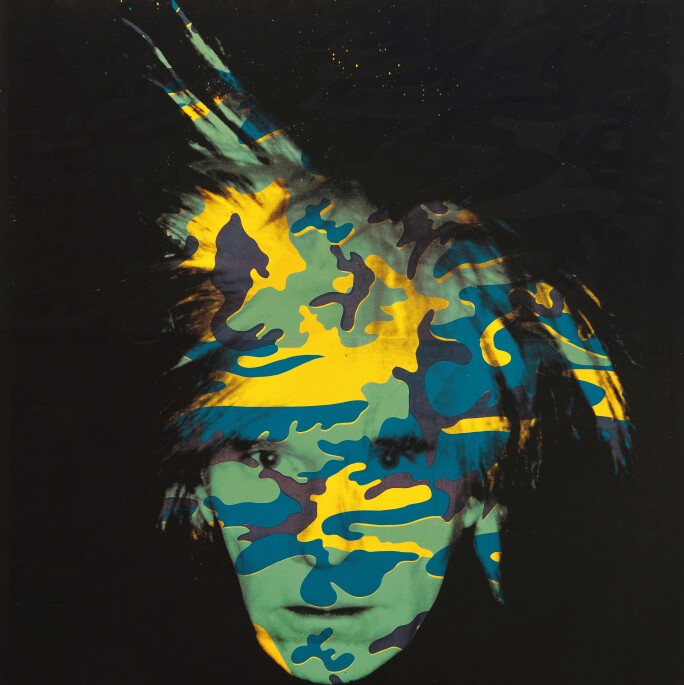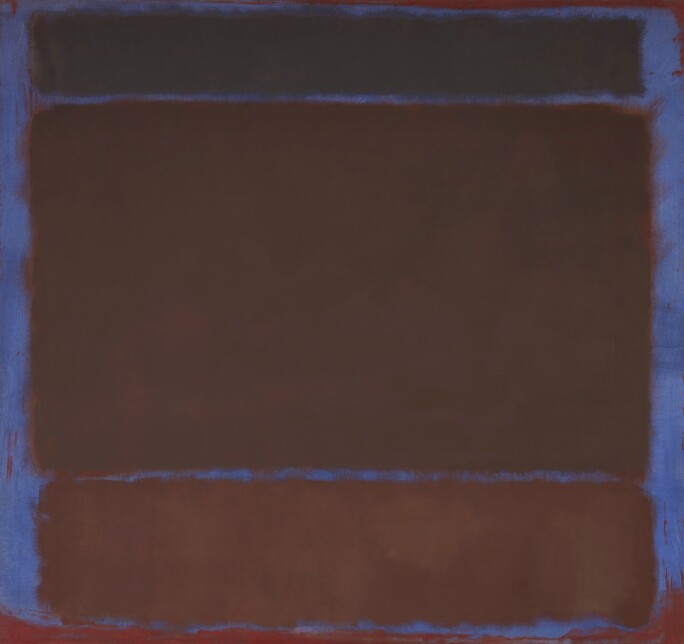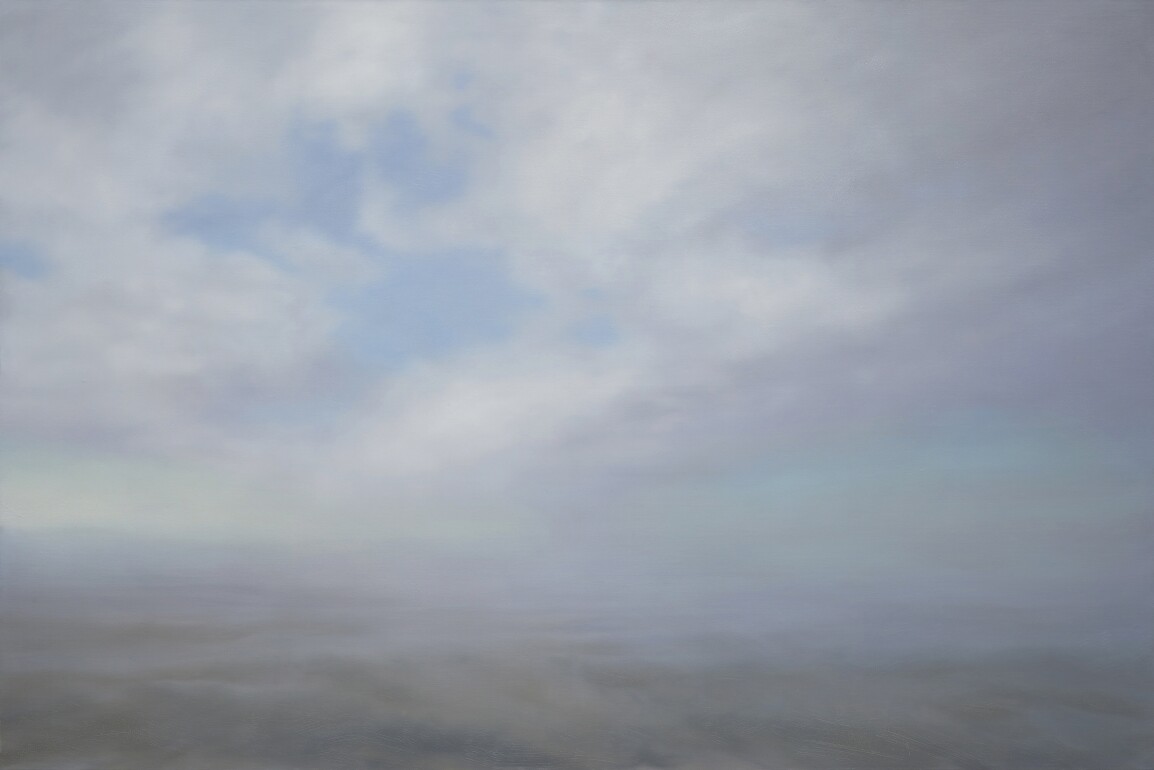Celebrated Works from the Macklowe Collection to be Offered in May
Celebrated Works from the Macklowe Collection to be Offered in May
The white-glove sale, last November, of 35 works from The Macklowe Collection was nothing less than historic, becoming, at $676.1 million, the most valuable single-owner auction ever staged: its success homage to the art of collecting in its highest form. This spring, Sotheby’s will offer a further 30 works from this celebrated collection, highlights from which are today unveiled in Sotheby’s London galleries by Will Gompertz and Eleanor Nairne, Artistic Director and Curator, respectively at the Barbican. Watch them below as they lift the curtain on the masterpieces to be offered in the dedicated evening sale at Sotheby’s New York on May 16, 2022.
“The Macklowe Collection tells the story of art in its highest form, with the utmost precision and clarity. Every artist here is represented at a moment of profound creativity.”
May will see a number of leading names from the November sale return, represented this time by artworks from different, but equally important, moments that act as critical counterpoints to their November counterparts. Gerhard Richter is among those reappearing, represented in this sale by Seascape, an extraordinary large-scale painting from 1975, capturing the magisterial beauty of the natural world, while at the same time blurring the distinction between photography and painting until they are almost entirely indistinguishable (est. $25-35 million). Andy Warhol returns here too, represented this time by one of his very final works – a monumental self-portrait painted as he contemplated his own legacy and status alongside those of the pantheon of stars who had peopled his works (est. $15-20 million). Not seen since it was exhibited for the first and only time at Anthony D’Offay’s seminal 1995 exhibition, Vanitas: Skulls and Self-Portraits by Andy Warhol, the painting is joined in the May edition by another seldom-seen work, Mark Rothko’s meditative, richly-coloured Untitled from 1960 – a critical moment in his career (est. $35-50 million). Following the success of the two paintings by De Kooning offered in the November sale (Untitled XXXIII, from 1977, which made $24.4 million; and Untitled IV, from 1983, which made $18.9 million), the May edition will include two further important works: one, Untitled, from 1961, and another, Untitled XIII, from 1984.

At the same time, those artists familiar from the November sale will be joined in May by others whose presence in the collection has not yet been revealed, including Jean Dubuffet, whose radical Grand Nu Charbonneux, from a breakthrough moment, has featured in almost every major exhibition dedicated to the artist (est. $4-6 million).
“The extraordinary results we saw in November speak both to the exceptional caliber of the collection as well as to the boundless appetite that exists today in what is undoubtedly a deep market for masterpieces.”
Individually, each of the works represented reflects the artist at their very best. Together, they trace the pinnacle of Western artistic achievement over the last eighty years, from Giacometti and Picasso through to Sigmar Polke, Cy Twombly, Roy Lichtenstein, Jeff Koons, Agnes Martin, Mark Grotjahn and more.
Key highlights from The Macklowe Collection will be on view to the public in Sotheby’s New Bond Street galleries from Tuesday February 22 until March 2, alongside preview exhibitions for the Modern & Contemporary and The Now evening auctions taking place in London on March 2. Highlights will also be exhibited in Palm Beach, Taipei, Hong Kong, and Shanghai before returning to New York for public exhibition ahead of the sale on May 16.
For more information on the results of the sale of works from the Macklowe Collection sold at Sotheby’s New York in November 2021, please click here.
Titans of Pop Art
Andy Warhol, Self-Portrait, 1986
Estimate: $15-20 million

Painted just months before his death in February 1987, Self-Portrait hails from Andy Warhol’s final body of works: the ‘Fright Wig’ series. Until now, this larger-than-life portrait has only once been publicly exhibited, as part of the Anthony d’Offay 1995 exhibition, Vanitas: Skulls and Portraits by Andy Warhol.
In this painting, Warhol’s face is obscured by a veil of camouflage – an anticipatory death mask – which seems a fitting device for the artist who, having been obsessed with the transience of life and the enduring power of the image, finally faced his own looming mortality. The series was arguably Warhol’s last attempt to give himself a final pictorial iconic status, important enough to rival that of Marilyn Monroe who had dominated his earlier works. Yet here the artist’s melancholic palette seems to reflect his realization that, while he might have rivaled Monroe in fame, he would never experience true legendary status, as legends are only born after their death.
Monumental in size, the painting’s 80-inch format is exceeded in scale by just seven known 108-inch examples. Other ‘Fright Wig’ self-portraits of this same size reside only in museum collections worldwide, including the Tate Gallery, London, the San Francisco Museum of Modern Art, and the Andy Warhol Museum, Pittsburgh.
Self-Portrait is joined in the sale by his Pop interpretation of the infamous Communist emblem of the Hammer & Sickle (1976), and an early, rare example of Warhol’s Blue Airmail Stamps from 1962, estimated at $4-6 million and $700-900,000 respectively.
Jeff Koons, New Hoover Convertibles, New Shelton Wet/Dry 10 Gallon Doubledecker, 1981-1986
Estimate: $3.5-4.5 million
This sculpture belongs to Koons’ The New series, the body of work with which Koons first made his mark in the artworld. In 1980, Koons exhibited a number of sculptures which anticipated this series in the windows of the New Museum in New York. While the idea of presenting an everyday object as a work of art looks back to Marcel Duchamp, here, there is an added irony, in that these brand-new vacuum cleaners are encased, protected from the very dust and dirt they are meant to remove. By placing the Hoover on an artistic pedestal, Koons plays with our understanding of ‘art’ while at the same time questioning society’s obsession with cleanliness and shiny new things: “I don’t seek to make consumer icons, but to decode why and how consumer products are glorified.” Here, the unused hoovers are in the ultimate state of perfection – were they to be used, Koons explained, the artwork would be immediately destroyed.
Sigmar Polke, Plastik-Wannen (Plastic Tubs), 1964
Estimate: $3.5-4.5 million
Sigmar Polke, The Copyist, 1982
Estimate: $3-4 million
Just as Warhol was influenced by the mass media and consumerist spirit of the time, so too was Sigmar Polke whose 1960s canvases can be interpreted as a tongue-in-cheek contemplation of the seductive, but ultimately empty, promises of a consumer-driven society. Moving surreptitiously with his family from East to West Germany at the age of twelve, Polke came to witness firsthand the manipulative power of propaganda and the media. While publications portrayed West Germany as a modern, thriving nation, the reality was somewhat different. One of just a handful of oil paintings created by Polke in the 1960s, Plastik-Wannen (Plastic Tubs) depicts banal, everyday objects of the kind that are nevertheless rendered as glossy and alluring objects of desire in newspapers and magazines. Its candy-colored palette and strong contours are reminiscent of American-Pop, yet by deliberately leaving areas of the painting unfinished, Polke hints to the less-than-perfect socio-economic state of post-war Germany.

If, in Polke’s oeuvre, the 1960s was defined by his challenging of mass media, the 1970s marked a decade when he would abandon paint in favor of photography and film, to challenge questions surrounding authenticity, reproduction, imitation and authorship. In the 1980s, however, Polke would return to painting with gusto, creating large, gestural canvases, combining a Pop-palette, figurative and abstract imagery.
The Copyist (1982) is a seminal work from the artist’s ‘second act’ as a painter, which saw Polke mix together traditional pigments with solvents, varnishes, toxins and resins to produce spontaneous chemical reactions across his canvases. In these later works, Polke sought to reflect on the concepts of originality and authorship, which had underpinned not only the Modernist tradition but also the mystique of Abstract Expressionism. The figure in the foreground has commonly been interpreted as Polke himself engaged in the practice of copying – perhaps his way of questioning the manner in which pictorial information has been shared over centuries, with artists traditionally relying on copies, as opposed to observing and interpreting the reality around them to create art.
Masters of Abstraction
Mark Rothko, Untitled, 1960
Estimate: $35–50 million

A quintessential example of Mark Rothko’s signature abstraction, Untitled represents one of the most important periods of artistic development in his career, situated squarely between two seminal commissions: the Seagram Murals (1958-59) and the de Menil Chapel (1965-67). It is at this juncture that Rothko replaced the high-keyed colors prevailing in his 1950s canvases with a more tonal and rich palette of darker reds, purples and deep blues. Meditative, brooding and romantic, Untitled conjures the twilight mystery the artist sought to impart to his canvases: “Often, towards nightfall, there’s a feeling in the air of mystery, threat, frustration, all of these at once. I would like my painting to have the quality of such moments.”
“There is more power in telling little, than in telling all”
Never before exhibited publicly, Untitled is just one of 19 paintings on canvas executed in 1960, nearly half of which reside in museum collections, including The Museum of Contemporary Art, Los Angeles, the San Francisco Museum of Modern Art, The Metropolitan Museum of Art, New York and Museum Boijmans van Beuningen in Rotterdam.
Willem de Kooning, Untitled, 1961
Estimate: $7-10 million

Willem de Kooning’s Untitled was executed in 1961, the year he began building his new home and studio in Springs, a small hamlet in East Hampton, before moving there permanently in 1963. The luminous atmosphere of the landscape and its palette of sun-drenched yellows, sandy beige and salt-washed blues soon infused the artist’s greatest works of the period, as he left behind the densely populated streets of Manhattan for this seaside town.
Having been featured in multiple major solo exhibitions, Untitled is a work that links de Kooning’s appreciation of landscape with the explosive gestural abstraction of the mid-1970s. It is married in this sale with his lyrical Untitled XIII from 1984 – a canvas that defined his final decade.
Almost a decade after de Kooning left Manhattan for a quieter life in Springs, another artist’s move, this time to New Mexico, took her art in a different direction too…
Agnes Martin, Untitled #11, 1985
Estimate: $4-6 million

Executed on Martin’s signature 72 x 72 canvas, Untitled #11 arguably recalls the work of Mark Rothko and Barnett Newman, who through abstraction in their work, hoped to convey the purest form of perfection and the sublime. It was Martin’s relocation from New York to New Mexico in the early 1970s, which profoundly impacted her later works. The desert’s sparsity and ever-expanding nature undoubtedly inspired her minimalist compositions, consisting of precisely spaced bands and repeated alternating colors, which are perhaps an echo of the ever-expanding desert before her. Deeply influenced by Taoism and Zen Buddhism, Martin turned to geometry as a vehicle to portray classic perfection in its high form, which she considered absent from nature and only held in the mind: “My paintings are about merging, about formlessness … A world without objects, without interruption.”
Martin’s Early Morning Happiness from 2001, will also be offered in May with an estimate of $2.5-3.5 million, following the stellar result achieved for the artist in November, when her Untitled #44 more than doubled its estimate to sell for a record $17.7 million to a collector in Asia.
Robert Ryman, Swift, 2002
Estimate: $8-12 million
Soaring to a staggering seven feet in height, Robert Ryman’s Swift is among the best examples of the artist’s late output to appear on the secondary market. Making its auction debut this May, the work was acquired from Pace Gallery in the year following its execution in 2002; Swift has remained in The Macklowe Collection for the nearly two decades since. Uniquely poetic in its title, and radical in its candor and breathtaking technical precision, Swift is a singularly elegant articulation of Ryman’s career-long investigation of the possibilities, limitations, and essential truths of abstract painting.
Mark Grotjahn, Untitled (Side Swiped and Carved Face 41.32), 2010
Estimate: $6-8 million
Produced in 2009-10, Mark Grotjahn’s enigmatic Untitled (Side Swiped and Carved Face 41.32) belongs to his Face paintings, an exemplary body of work that he began at the turn of the millennium defined by his ongoing preoccupation with faces and masks. Grotjahn’s evocation of the mask also echoes the early modernist affinity for traditional African aesthetics, evident in the mask-like forms used by Picasso, Matisse and Brancusi. Developed organically out of the artist’s well-known Butterfly paintings, the Face paintingsprovide a more direct, unmediated reflection of the artist’s subjectivity. Measuring over eight feet tall and six feet wide, this larger-than-life painting displays Grotjahn’s skillful synthesis of abstraction and figuration, producing a captivating visual effect.
Modes of Representation
Gerhard Richter, Seestück (Seascape), 1975
Estimate $25-35 million
Emanating celestial light on a spectacular scale, this piece, acquired in 1998, is illustrative of the aesthetic and conceptual mastery that has come to define the artist’s revolutionary body of work. Evocative of the Romantic and sublime landscapes of Caspar David Friedrich, John Constable’s famous cloud studies, and the atmospheric light effects of Turner, Seascape is at the same time resolutely contemporary.

One of only four 2 x 3 meter (78½ x 118¼ inches) canvases treating this subject, all executed in 1975 and housed in prominent collections around the world, Seestück (Seascape) captures aspects of Richter’s photo based paintings and anticipates his abstract tendencies, at the same time bringing into focus the late 20th-century debate around the role and legitimacy of painting.
Jean Dubuffet, Grand Nu Charbonneux, 1944
Estimate: $4-6 million
The first large-scale nude Jean Dubuffet ever painted, Grand Nu Charbonneux is the only work by the artist in The Macklowe Collection, and has featured in major retrospectives. The work was created in 1944, just two years after Dubuffet’s return to painting, following an eight-year hiatus during which he focussed on running his family’s wine business. It was during this same year that Dubuffet held his first solo show at the Galerie Rene Drouin in Paris, where he gained an immediate reputation as a rebellious figure whose works divided the opinions of his audience.
With a radical Art Brut style, Dubuffet’s portrayal of female nudes were not intended to be harsh, but rather a challenge towards the conventional standards of beauty in the West – from antiquity to modern-day magazine covers. The artist once explained that he found these depictions “miserable”, instead aspiring to create a female form that would feel amorphous and reminiscent of ancient fertility goddesses.
Determined to stay original, Dubuffet would spend hours staring at his sitter, before returning to his studio where he chose to deliberately reduce his subjects to what he called “a likeness burst in the memory”. Dubuffet felt that Western culture was derivative and cliched, with artists of all kinds paying too much heed to their forebears and peers. In fact, his feelings on the matter were so strong that when Jackson Pollock gave him a painting in an act of friendship, the artist accepted, but immediately gifted the work to an acquaintance for fear that the work might subconsciously influence his own.

Pablo Picasso, Jeune homme, 1958
Estimate: $1-1.5 million
Jeune homme is a rare, bronze sculpture by Pablo Picasso, and one of only two casts of this subject. The original model on which they are based was created from pieces of driftwood that the artist found near his home ‘La Californie’ on the Mediterranean coast of France.
Exuding masculinity and virility, the form’s bold lines and stark delineations recall the African and Oceanic sculptures which had inspired Picasso from the earliest days of his career. Its geometric simplicity also recalls the artist’s earlier three-dimensional Cubist still lifes and musical instruments.
Alberto Giacometti, Diego sur stèle II , 1958
Estimate: $7-10 million

Attesting to the series’ importance, Giacometti selected Stèle II and Stèle III to be included in his seminal Venice Biennale exhibition in 1962.
Depicting Alberto Giacometti’s favored subject – his brother Diego – Diego sur stèle II is the second of three versions of the work, and the most radically modeled of the series. Loosely alluding to the sculptural tradition of classical antiquity, which immortalized noblemen, emperors, demi-Gods and deities, Giacometti elevates his sculpture with mystery and majesty. The bust of Diego is perched on an integrated pillar in a position of perfect balance, immortalized in contemplation.
The Macklowe Collection, May 16, 2022. Preview Exhibitions:
22 Feb–2 March
Palm Beach
17–20 March
Shanghai
19–20 March
Taipei
14–15 April
Hong Kong
24–29 April
This article originally appeared at https://www.sothebys.com/en/series/the-macklowe-collection-announcement




 Facebook
Facebook
 X
X
 Pinterest
Pinterest
 Copy Link
Copy Link

